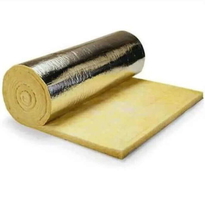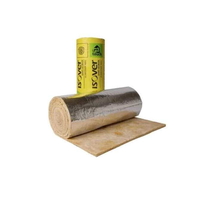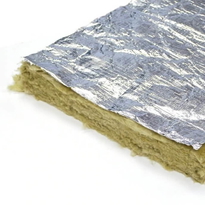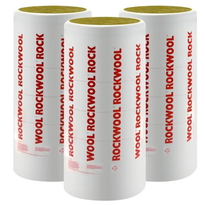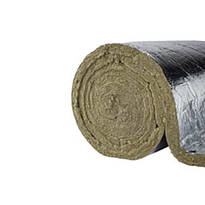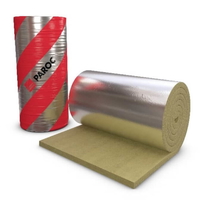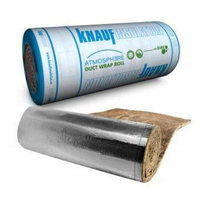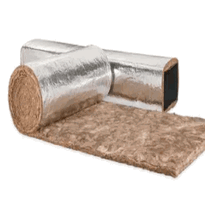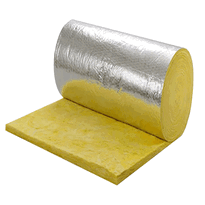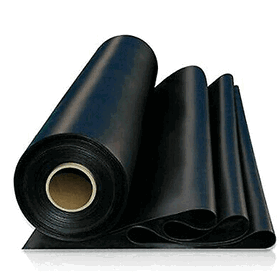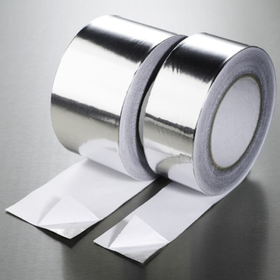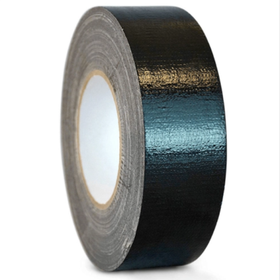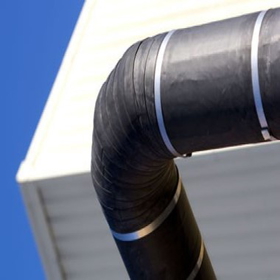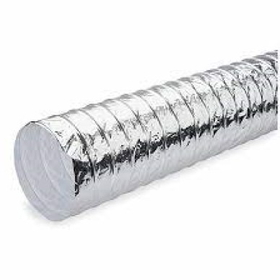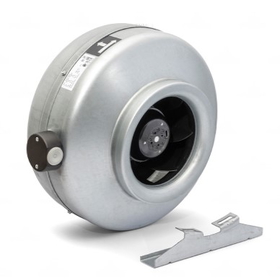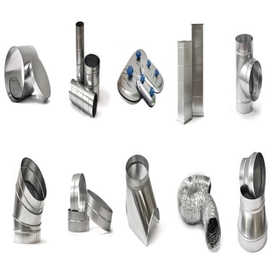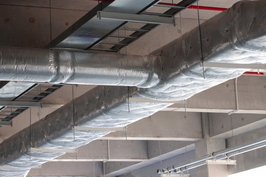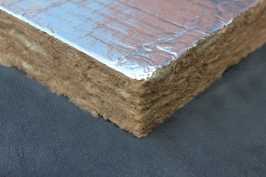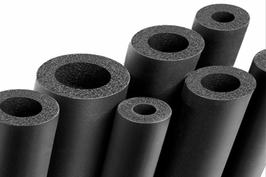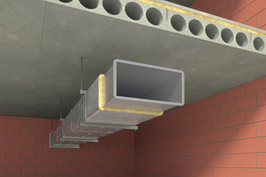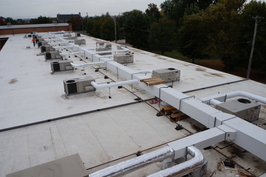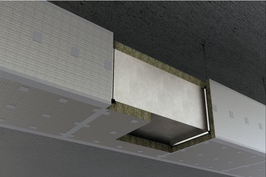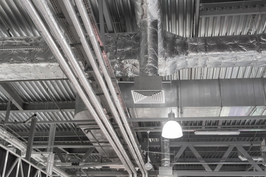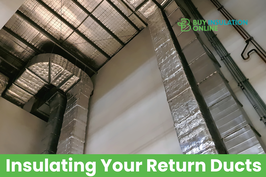Ductwrap Insulation
When you buy ductwrap insulation online from us, we deliver them for free in major cities like Birmingham, Manchester and London (no min-order value) and other cities (For orders above £125.00)
We value your business with us and are hence always at your service. If you have any doubts regarding ductwrap insulation, please do not hesitate to contact us via call, email, chat, Facebook or Whatsapp.
Similar Categories
All You Need to Know About Ducting Insulation Wrap
At Buy Insulation Online, we stock the best duct insulation wrap available we guarantee it. With very competitive prices and deliver them nationwide. When you buy ductwork insulation wrap online from us, we deliver them for free in major cities like Birmingham (no min-order value) and other cities (For orders above £125.00)
We value your business with us and are hence always at your service. If you have any doubts regarding ductwrap insulation, please do not hesitate to contact us via call, email, chat, Facebook or Whatsapp.
What is duct wrap insulation?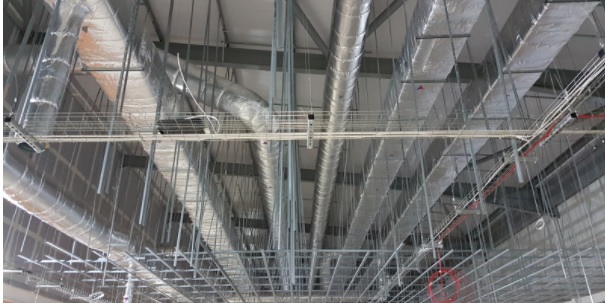
Duct wrap is essentially wrap around insulation that is used to insulate ductwork. Ductwrap comes in rolls made of fibreglass or mineral wool that is used to insulate ducts of almost any kind and shape.
It usually comes with an aluminium foil facing which is reinforced with a mesh of glass strands which is woven into the foil face. The foil-face acts as a vapour barrier to prevent condensation and also to reflect heat back in and away from the ductwork.
The exception is nitrile rubber sheet which has require a vapour barrier as it is inherent to rubber itself.
Duct wrap insulation is available in various thicknesses and R-values and materials such as Fibreglass, Rockwool, Bubblewrap and Nitrile Rubber.
Although it can be installed inside the duct within silencers/attenuators, for example, it is mostly employed on the external side of the ductwork.
How does thermal duct insulation work?
Ductwrap works by restricting or minimising heat loss in the ducts. Because of the way it is spun, fibreglass and mineral wool insulation trap the heat coming from the ducts effectively.
This, in turn, slows down heat transfer to the surroundings. This means ducts supplying heated/conditioned air will maintain the temperature required for a longer time, at with less energy needed to top up the temperature of the ducts.
Why Is It Important to Insulate Ductwork?
As we all know, energy costs money. And, in today's world, conserving energy is more important than ever. That's why it's so important to insulate ductwork.
Ductwork is responsible for distributing conditioned air throughout a home or building that you've paid good money to heat or cool. If it's not properly insulated, you can waste a lot of energy.
Apart from having excellent thermal properties, foil duct insulation also bears the following benefits:
1. Reduced Energy Costs
You can lower your energy bills by up to 30 per cent by insulating using HVAC insulation wrap.
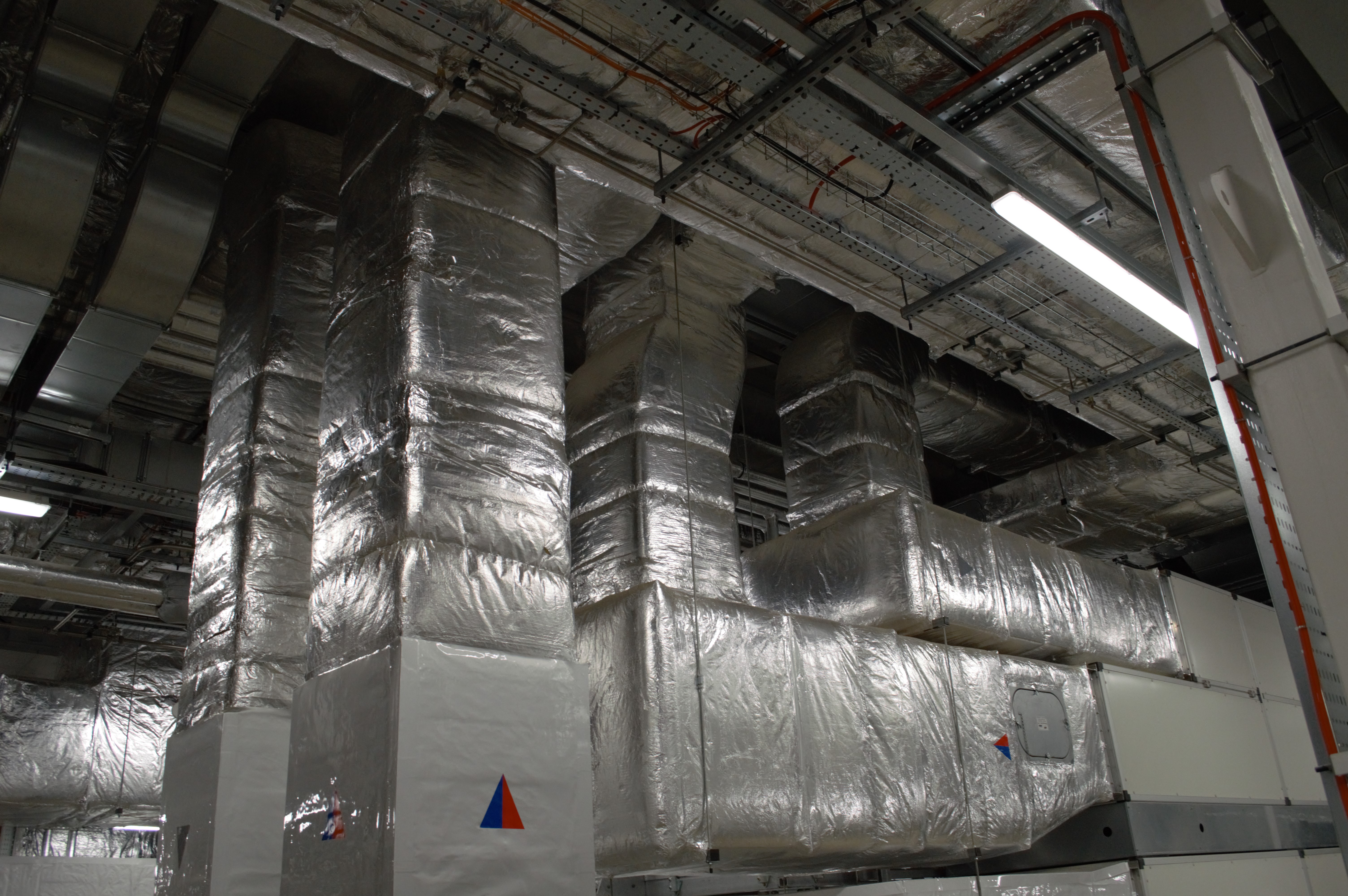 2. Increased Comfort
2. Increased Comfort
Insulating your ductwork can help to even out the temperature in your home or building, making it more comfortable for occupants.
3. Improved Indoor Air Quality
By sealing and insulating your ductwork, you can help to improve the indoor air quality in your home or building by preventing outside air from entering the ductwork and circulating throughout the building.
4. Prolongs the Life of the Ductwork
By protecting the ductwork from the elements and preventing air leaks, you can help prolong the ductworks life and avoid the need for repairs or replacement in the future.
5. Soundproofs Ductwork
Most air duct insulation wrap has fairly decent levels of acoustic performance. Since the wool fibres absorb sound waves, it acts as an acoustic duct liner on the exterior of the ducts themselves.
6. Stops Ductwork Condensation
Duct wrap for condensation prevention is a great strategy to prevent ducts from sweating. Duct blanket insulation has factory-applied foil facings that prevent the ingress of warm, moist air from forming condensation on the metal surface of the ducting or any other equipment that it is used to wrap.
7. Duct Blanket Insulation Helps prevent the spread of fire
One of the primary benefits of duct wrap insulation is that it can help prevent the spread of fire in a building. This is because the insulation is designed to be fire-resistant, meaning that it will not burn easily and will help to slow the spread of a fire if one were to occur.
Additionally, insulated duct wrap can help to protect the air ducts themselves from damage during a fire, which can help to prevent the spread of fire throughout the building. So, it is an important component of fire prevention in a building.
What's the difference between ductwrap and duct boards?
Simply said, insulation wrap for ductwork is lightweight, flexible, you can roll it up in your hand and it will conform to circular ducts and pretty much any shape you want it to. Ductboards on the other hand are rigid, more difficult to handle and install and are only really used for square and rectangular ductwork.
Flexible duct insulation wrap can be used to insulate ducts of all kinds - circular, oval, square, circular diffuser plenums, square to round etc.
Duct wrap rolls are also cheaper compared to duct boards.
At Buy Insulation Online, we stock Ductwrap insulation from the following brands
Isover Ductwrap Insulation
Isover from Saint Gobain makes fibreglass duct insulation rolls in two different variants- Isover Climcover and Isover Climcover Strong.
Isover ductwraps are very flexible and have a very good look and feel to them, and because they are so light they can be easily transported around the job site. There's a reason they are considered the best duct wrap insulation rolls on the market by professional thermal insulation engineers.
We have several different sizes of Isover Climcover available, varying in thickness from 25mm up to 50mm.
They are both made out of fibreglass but Climcover strong is denser and is therefore more rigid than the standard duct wrap variant. It's also more expensive
Isover duct wrap is probably the cheapest wrap for ductwork, per m2 available in the market today. It provides effective insulation, soundproofs ductwork and is resistant to moisture. Isover duct insulation is also A2-rated for fire resistance.
We stock the following thicknesses of Isover duct wrap 25mm, 40mm and 50mm.
Rockwool Ductwrap Insulation
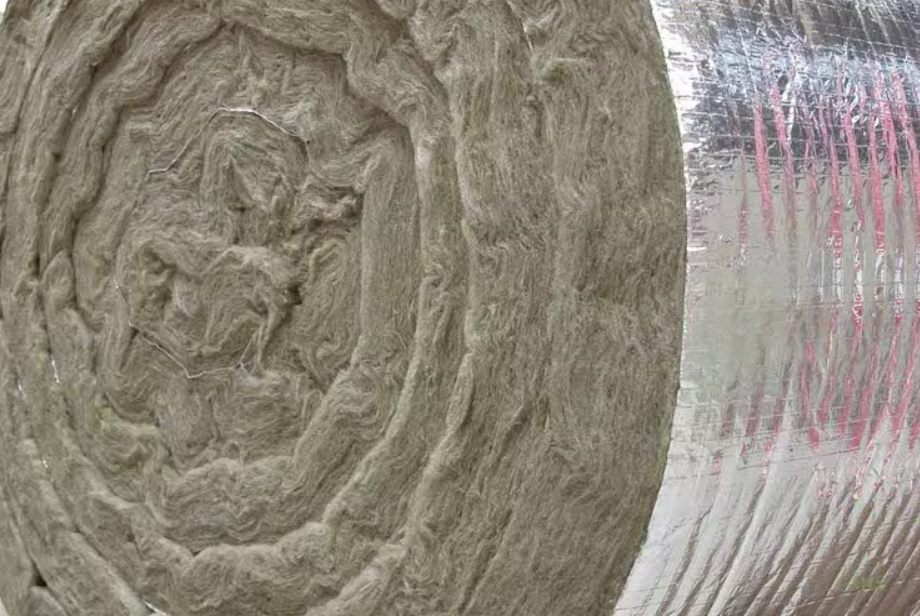 Rockwool duct wrap for HVAC ductwork is another top-quality duct roll we stock. Made with stone wool, this ductwrap insulation minimises heat loss whilst keeping condensation and duct sweating at bay.
Rockwool duct wrap for HVAC ductwork is another top-quality duct roll we stock. Made with stone wool, this ductwrap insulation minimises heat loss whilst keeping condensation and duct sweating at bay.
It is easy to install, offers dimensional stability and is very dense (typically 45kg/m3), and provides superior performance and appearance once it is fitted. It has excellent thermal and acoustic properties and is backed with solid aluminium foil.
Rockwool duct wrap is superior in fire resistance and acoustic insulation compared to fibreglass duct wrap.
We stock the following thicknesses of Rockwool ductwrap 25mm, 40mm and 50mm.
Which One Can I Use As External Duct Wrap?
There isn't really a debate over internal vs external ductwrap. You can use any type of insulation to wrap ductwork externally, as long as it is shielded from the weather using suitable insulation cladding like aluminium stucco, PIB or a 5 Ply Laminate Cladding like Ventureclad, Proclad or Klasseclad.
How to install ducting insulation?
Duct wrap is typically installed using adhesive tape or mechanical fasteners. It is essential to follow the manufacturer's installation instructions carefully to ensure that the duct wrap is installed correctly.
Duct wrap can be used to insulate both round and rectangular ductwork. Using spray adhesive alongside mechanical fixings such as sticky pins and lacing wire can make the job much faster and results in a neater finish.
When installing duct wrap on round ductwork, it is essential to start at the bottom and work your way up. This will ensure that the duct wrap is installed evenly.
Never pull the ductwrap too tight, this will negate its ability to firmly insulate and acoustically insulate the ductwork because the air pockets within the fibreglass insulation are reduced or eliminated. This will prevent the insulation from doing its job.
When installing duct wrap on rectangular ductwork, it is essential to start in the middle and work your way out. This will ensure that the duct wrap is installed evenly.
Installing duct wrap insulation around heating and ventilation ductwork is quite easy and can be taken up as a DIY task, provided you are an efficient DIYer.
Just cut the vent insulation wrap to size, following the manufacturer's guidelines and secure it around the ductwork using foil tape to initially type the two ends together and then use a mechanical fixing such as lacing wire used to bind it together and/or insulation stick pins evenly spaced on the sides and bottom of the ductwork.
Complete the installation using duct insulation triangles, as it is important to label the ductwork properly to make sure any alterations or maintenance that is required for the air conditioning is made as easy as possible for the tradesmen involved to identify that ductwork via these ID triangles.
For further information on installing ductwrap insulation, you can also refer to our blog here How To Install Duct Insulation.
What can I insulate using duct wrap?
It should also be noted that insulation duct wrap can be used for insulating more than just ventilation ducts. Because of its flexibility, it can be used to insulate pretty much anything as long as it doesn't exceed the maximum service temperature that the ductwrap is rated for like high-temperature applications such as hot air exhausts from turbines etc.
When it comes to insulating equipment in your plant room, for example, ductwrap is perfect for insulating;
- Expansion Tanks -
- Cold Water Storage Tanks -
- Heat Exchangers -
- Hot Water Cylinders -
- Dosing Pots -
- Dirt Separators -
- Low Loss Headers -
Different types of Duct Wrap
Apart from the previously mentioned standard fibreglass and mineral wool insulating wraps for ductwork, there are a few other options available if needed as listed below.
Nitrile Rubber Insulation Wrap For HVAC
The best insulation wrap for chilled ducts is probably a nitrile rubber product like Armaflex or Kflex. Nitrile rubber, also known as Buna-N or acrylonitrile-butadiene rubber, is a synthetic rubber material that is commonly used in the manufacturing of insulation products. It is a highly flexible and resilient material that is resistant to not only moisture but oils, fuels, and acids.
It doesn't have a foil face vapour barrier because the insulation itself doesn't permit moisture to permeate through it. Hence why it's considered good for chilled air ducts. However it is quite expensive compared to standard mineral wool ductwrap, it can be up to 3 times the price to buy and takes twice as long to install as the joints all need adhesive applied to them.
Fire Rated Duct Wrap Insulation
Fire-rated duct wrap insulation is a type of insulation that is specifically designed to be used on air ducts in a building and has been tested and rated for its ability to resist the spread of fire.
This type of insulation is typically made of fire-resistant material, such as dense rock wool or ceramic fibres.
In the United Kingdom, fire-rated duct wrap insulation is required to meet the requirements set forth in British Standard 476: Fire Tests on Building Materials and Structures.
This standard outlines the methods and procedures for testing the fire resistance of building materials and structures, including duct wrap insulation. In order to be considered fire-rated, the duct wrap insulation must be tested in a laboratory setting and must demonstrate a certain level of fire resistance.
The results of these tests are used to assign a fire rating to the insulation, which indicates its ability to withstand fire and resist the spread of flames.
The fire rating of duct wrap insulation is typically expressed as a number, with higher numbers indicating a higher level of fire resistance. For example, a duct wrap insulation with a fire rating of 30 minutes would be expected to withstand a fire for at least 30 minutes without catching fire or failing.
Fire-rated duct wrap insulation is an important component of fire prevention in buildings, as it can help to slow the spread of a fire and protect the air ducts from damage.
Acoustic Duct Wrap
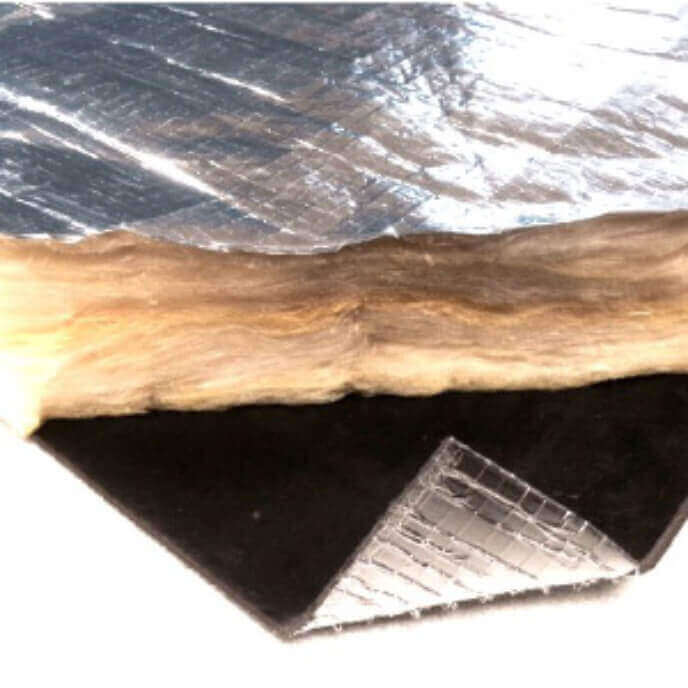 There are various types of acoustic ductwrap on the market, although they may not be marketed only for use as acoustic wrap insulation for ductwork.
There are various types of acoustic ductwrap on the market, although they may not be marketed only for use as acoustic wrap insulation for ductwork.
They primarily consist of is 2 or three layers of insulation material made from glass or rock mineral wool, a foil vapour barrier and an acoustic polymeric barrier vinyl. An example of one of these products is GIS Polymeric Barrier Quilt.
Polymeric barrier acoustic duct insulation is a type of insulation material that is specifically designed to reduce noise levels in heating, ventilation, and air conditioning (HVAC) systems. It is typically made from a plastic or polymer material that is formed into a flexible, easy-to-install sheet or wrap.
One of the main benefits of polymeric barrier acoustic duct insulation is its ability to effectively reduce the transmission of noise through ductwork. It works by absorbing or blocking sound waves as they pass through the ductwork, which helps to minimize the amount of noise that is transmitted to other areas of the building.
There is one product that is specifically designed for use on circular ductwork.
Rockwool Techwrap Acoustic Duct Insulation is a flexible, thermal and acoustic insulation material made from mineral wool.
In terms of acoustic performance, Rockwool Techwrap Acoustic Duct Insulation is highly effective at reducing noise levels in air handling systems. It helps to minimize the transmission of noise through ductwork, making it an ideal choice for use in environments where noise reduction is a priority, such as hospitals, schools, and residential buildings.
Overall, Rockwool Techwrap Acoustic Duct Insulation is a high-quality, durable, and effective insulation material that is suitable for use in a wide range of HVAC systems. Its combination of thermal, acoustic and fire moisture resistance properties make it a versatile choice for use in various applications.
Duct Liner Vs Duct Wrap
There are 3 main types of insulation for HVAC ductwork: duct wrap, duct boards which we have already covered, but there is a third called duct liner.
Duct wrap is installed by wrapping around ductwork on its external skin, as duct sleeve insulation essentially, whilst duct liner is a type of insulation that is installed on the internal skin of ductwork.
Duct liner is usually installed within the factory during the fabrication of the ventilation ducts.
An acoustic duct liner is a great solution to use around noisy fans. It is especially used within attenuators and silences. Duct liner in this instance is usually made from acoustic insulating foam, kind of like the ones that you see in side music recording studios but just sandwiched between an inner leaf and an external leaf of galvanised steel.
Whilst we do not sell this type of insulation on our website, we can get you a quote for internally lined ductwork with thermal and acoustic insulation. Please get in touch with our customer representatives for more info.
When choosing between duct wrap and duct liner, it is essential to consider the climate in which the HVAC system will be used, the noise level that is acceptable, and the budget.
What is the Cost of Ductwrap Insulation?
Ductwrap lagging is a cheaper way to insulate ducts compared to using duct insulation boards. In 2023, Isover and Rockwool duct wrap costs about £5-7 per square meter. For a complete installation of duct wrap by a professional thermal insulation contractor, you can expect to pay around £20 to £30 a square meter on average, location depending.
If you are thinking of doing the job yourself then there are a few other material costs you need to take into consideration apart from the ductwrap itself.
Foil Duct Wrap Insulation Tape to seal the joints where the wrap joins to itself and adjoining pieces.
Lacing Wires to hold the insulation in place
Identification Triangles so it's easy to identify the ducts in future
However, even with these materials included, this should not add more than one to two £ per square metre.
You can save on the cost of installing duct insulation if you are an efficient DIYer or tradesman. However, we advise that you should seek a professional thermal insulation contractor for installing duct insulation, especially if you have access issues.
Final Thoughts
Duct wrap insulation is a cost-effective way to save energy, reduce your utility bills, and increase the comfort of your home or facility. With its energy-saving properties and long-lasting durability, duct wrap insulation is an investment that pays off in the long run.
At Buy Insulation Online, we specialize in providing top-quality H&V insulation materials and accessories, including duct wrap insulation. Our extensive selection and helpful customer service team make it easy to find everything you need to get your project started.
Shop now and start enjoying the benefits of insulated ductwork today
